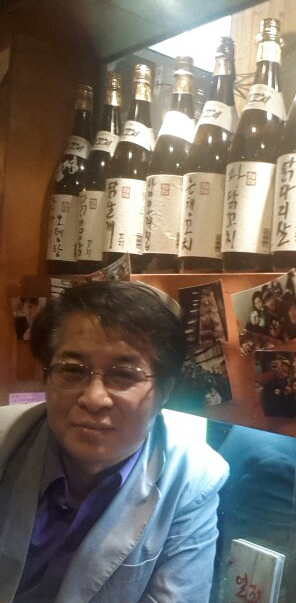[동영상 강의 유튜브 연우리 영어] → https://youtu.be/cCYNJqo06KA
[PT14-12]0565. [국민대학교 2007-1]
High Definition (HD) is an (A)[impressive] new recording format that offers (B)[significantly] greater (C)[clarity and resolution] when (D)[comparing] to Standard Definition (SD).
[PT14-12]0565. [접속사 분사 구문의 능동과 수동]
정답 - D : [comparing] → [compared] : HD는 SD에 비교되는 것이므로 접속사 분사 구문에서 수동인 과거 분사를 써야 한다.
[해석] 고화질(HD)은 표준 화질(SD)과 비교되었을 때 상당히 더 큰 명료성과 해상도를 제공하는 인상적인 새로운 녹화 포맷이다.
[PT14-13]0566. [한국외국어대학교 2003-1]
다음 괄호에 적합한 형태가 쓰인 것은?
Freud is at his best when (discuss) those seemingly accidental mistakes of speech and writing where one word (substitute) another.
(A) discusses ― substitutes (B) being discussed ― is substituting
(C) is discussing ― to substitute (D) discussing ― is substituted for
(E) to discuss ― to substitute for
[PT14-13]0566. [접속사 분사 구문의 능동과 수동]
정답 - D : when discussing = when he is discussing
substitute A for B → 수동화 → A is substituted for B
[해석] 한 단어가 다른 단어로 교체된 말이나 글의 겉보기로는 우연한 실수로 보이는 것들을 논의할 때 프로이트는 가장 뛰어나다.
[PT14-14]0567. [세종대학교 2008-1]
After the church's (A)[silence on] the topic (B)[for decades], the (C)[editor of] the magazine says it has no choice (D)[but examine] its past.
[PT14-14]0567. ['have no choice but to v']
정답 - D : [but examine] → [but to examine] : have no choice but to ~ : ~ 이외의 선택이 없다 : 명사인 'no choice'와 대조되는 것이므로 명사적 용법인 'to 부정사'가 따르는 것이 당연하다.
[해석] 그 교회가 그 문제에 대해서 수십 년 간 침묵한 후여서 이 잡지사의 편집자는 교회의 과거를 조사하는 것 이외의 선택이 없다고 말한다.
[PT14-15]0568. [총신대학교 2008-1]
They couldn't but __________ at the funny scene.
(A) laughing (B) laugh (C) laughed (D) to laugh
[PT14-15]0568. ["can't but 원형"]
정답 - B : cannot but 원형 : ~할 수밖에 없다 : 조동사 뒤에 따르는 것이므로 '원형 부정사'가 따르는 것이 당연하다.
[해석] 그들은 그 우스운 장면을 보고 웃을 수밖에 없었다.
[PT14-16]0569. [단국대학교 2003-1]
다음 우리말을 올바르게 표현한 것은
나는 이 앨범을 볼 때마다 즐거웠던 학창시절이 생각난다.
(A) Every time I look at this album, I remind of my happy school life.
(B) I never look at this album but thinking of my happy school life.
(C) Whenever I look at this album, but I am remembered my pleasant school life.
(D) I cannot look at this album without being reminded of my happy school days.
[PT14-16]0569. ['cannot ~ without ~ing']
정답 - D : cannot ~ without ~ing : ~할 때마다 ~하다 be reminded of ~ : ~이 생각나다
A : [remind of] → [am reminded of]
B : [but] → [without]
C : [but I am remembered] → [I remember]
[PT14-17]0570. [울산대학교 2005-1]
주어진 우리말을 가장 잘 표현한 글을 고르시오.
그는 그녀와 논쟁할 만큼 어리석지는 않다.
(A) He knows so well as arguing with her.
(B) He knows better than to argue with her.
(C) He knows better than argues with her.
(D) He knows so well as to argue with her.
[PT14-17]0570. [know better than to ~]
정답 - B : know better than to V : ~하기보다는 더 잘 안다 → ~할 만큼 어리석지는 않다
'y well > x well'을 비교로 만든 것인데 '논쟁한다면 예컨대 아이큐 90' 실제로는 '아이큐 120'이라는 얘기다. '논쟁한다면'은 조건에 해당하므로 원형 부정사가 아니고 'to 부정사'를 사용해야 한다.
[PT14-18]0571. [대구대학교 2007-1]
I ____________ brushing my teeth twice a day.
(A) make it a rule of (B) used to (C) am in the habit of (D) make a custom to
[PT14-18]0571. [부정사와 동명사]
정답 - C : be in the habit of ~ing = make it a rule to V
[해석] 나는 하루에 두 번 칫솔질을 한다.
[PT14-19]0572. [세종대학교 2003-2]
In addition to being a naturalist, Stewart E. White was a writer ___________ the struggle for survival on the American frontier.
(A) whose novels describe (B) he describes in his novels
(C) who, describing in his novels (D) his novel describe
[PT14-19]0572. [소유격 관계사 이전형]
정답 - A : 소유격 관계사가 쓰인 'whose novels'가 describe의 주어로 쓰이고 있다.
D : 관계사로의 전환 이전형인데 단수와 복수 일치형인 'describe'도 맞지 않다.
B : 관계사도 없이 두 개의 절이 연결되지 못한다.
C : 관계절에 정동사가 없다.
[해석] 박물학자이면서 스튜어트 E. 화이트는 미국의 프런티어에서의 생존 투쟁을 묘사하는 소설을 쓴 작가였다.
[PT14-20]0573. ⋆ [대구가톨릭대학교 2008-1]
(A)[No one] is allowed on the premises except employees and (B)[them] (C)[who] have a (D)[valid] identification card.
[PT14-20]0573. [관계절의 제한 수식이 불가능한 대명사]
정답 - B : [them] → [those] : 'them'은 관계절로 제한 후치 수식할 수 없다.
[해석] 직원과 유효한 신분증이 있는 사람들을 제외하고는 어느 누구도 구내에 들어오는 것이 허용되지 않는다.
'편입 문법 3000 Plus' 카테고리의 다른 글
| 편입 문법 3,000제+ 강의 [098회] (0) | 2021.01.06 |
|---|---|
| 편입 문법 3,000제+ 강의 [097회] (0) | 2021.01.06 |
| 편입 문법 3,000제+ 강의 [095회] (0) | 2021.01.05 |
| 편입 문법 3,000제+ 강의 [094회] (0) | 2021.01.05 |
| 편입 문법 3,000제+ 강의 [093회] (0) | 2021.01.05 |
